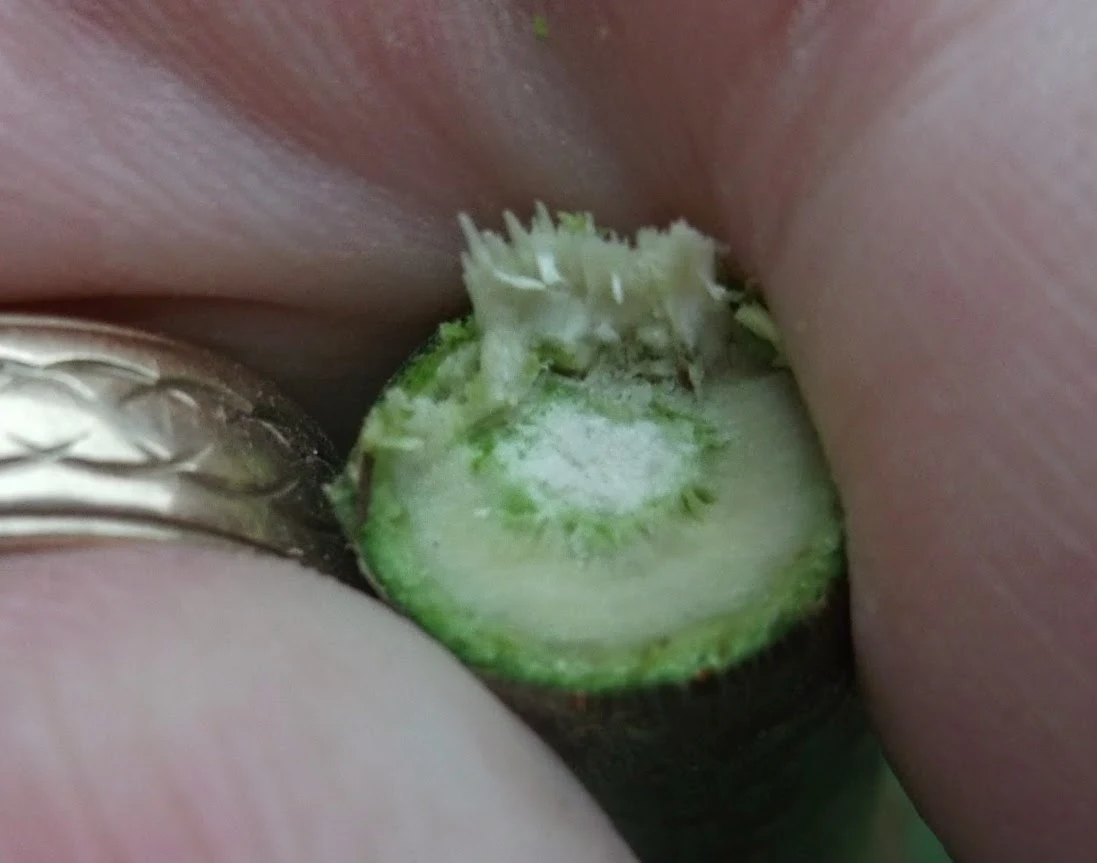 |
| In the garage. Neutral filled by some kind of wasps/solitary bees. 4.7mm diameter holes. |
 |
| In the woodpile. |
 |
| From the woodpile, a hole that is filled with eggs. |
 |
| Pith of Box Elder. This is the natural choice of "nurseries" for solitary bees and wasps. In general, species with larger leaves have coarser stems and larger piths. |
 |
| Cottonwood stem. Width of wedding band is 5.7mm |
 |
| Quaking aspen. |
 |
| Black willow. |
 |
| Staghorn sumac. Cut on the diagonal because stem collapses when cut with bypass pruners. Diameter of pith also varies with the initial growth rate of the stem and varies from base to tip. |
 |
| White willow |
 |
| Missouri willow. |
Each species of solitary bees has a preferred diameter for their nursery. They also appear to have the ability to bore undersized holes out to their preferred diameter. If they can expand the size of the hole in ash (a hard wood) boring out the pilot hole in a soft wood like willow or aspen should be a piece of cake.
The picture in my head is to cut a boatload of assorted twigs into four-to-six inch lengths, bundle them into convenient sizes bundles and then stash them in cans (Hunt's Pasta Sauce cans are approximately five inches tall by three inches diameter) to shelter them against the worst of the weather. By offering a menu of various diameter piths, from willows on the small end and sumac on the large end I hope to make my property more hospitable to these little critters.
No comments:
Post a Comment
Readers who are willing to comment make this a better blog. Civil dialog is a valuable thing.